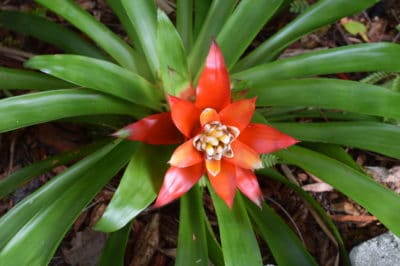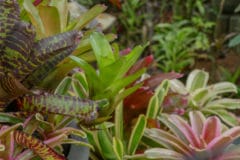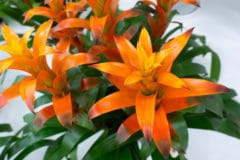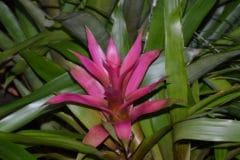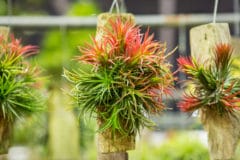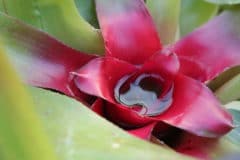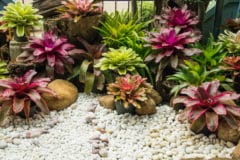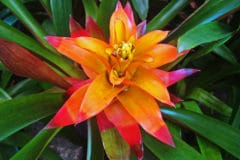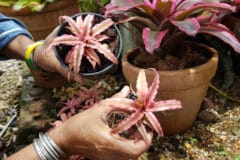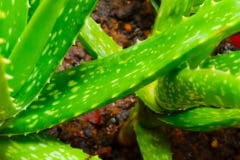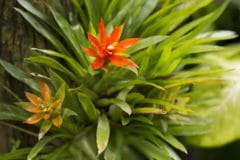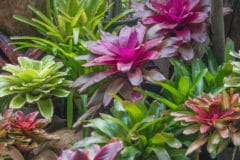Soil Functions
Whether growing indoors or outdoors, the soil in which you plant bromeliads has several different functions. It anchors plants and provides stability for the roots. It holds the air and water a plant needs, and provides a medium for water soluble nutrients. Garden soil is also home to multiple fungi, bacteria and viruses which interact with plants in a symbiotic fashion.
Bromeliad Growing Styles
Bromeliads may be epiphytic, terrestrial or saxicolous. In other words, they grow on other plants (usually trees), in the ground or on rocks. However, they are not like parasitic tree-growing species such as mistletoe, but simply attach themselves to branches, bark or rocks. Some epiphytic varieties can grow both on trees and in the ground.
Bromeliad Soil Needs
Bromeliads that need or can grow in soil usually prefer an acidic medium. In all cases, the soil must drain well. This is necessary to prevent waterlogged soil that may encourage root rot and to ensure that there is adequate air in the soil. Commercial soil mixes are usually readily available and may vary in their ingredients. You can also mix your own.
Potting Mix Ingredients
Each of the ingredients in bromeliad potting mixes fulfills a particular need. Among these are:
- Sphagnum peat moss – promotes water retention but not soggy roots; adds acidity.
- Perlite or vermiculite – these very light particles help prevent soil compaction; they do not affect water retention.
- Fir bark or orchid bark– adds texture to promote drainage and increases acidity.
Making Your Own
The purpose of a bromeliad potting mix is to provide support, water and nutrients to the plant, while at the same time allowing for maximum air and water flow. Experiment with different proportions to see what works. If you use garden soil, pasteurize it first. Try equal parts peat moss, perlite and fine fir bark or one-half potting soil and one-quarter each perlite and orchid bark.
Other Important Factors
No matter what the soil, the environment may also have an impact. Growing outdoors in humid or high rainfall areas means the soil must drain very well. Plants in dry environments may need more watering but even faster drainage. Pay close attention to your plants and adjust such factors as light, fertilizer, humidity, water and air accordingly.
